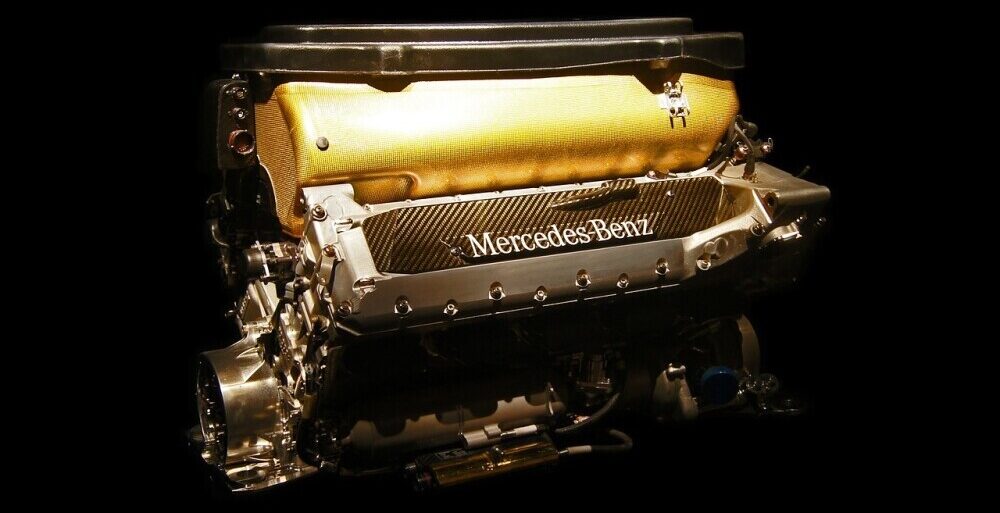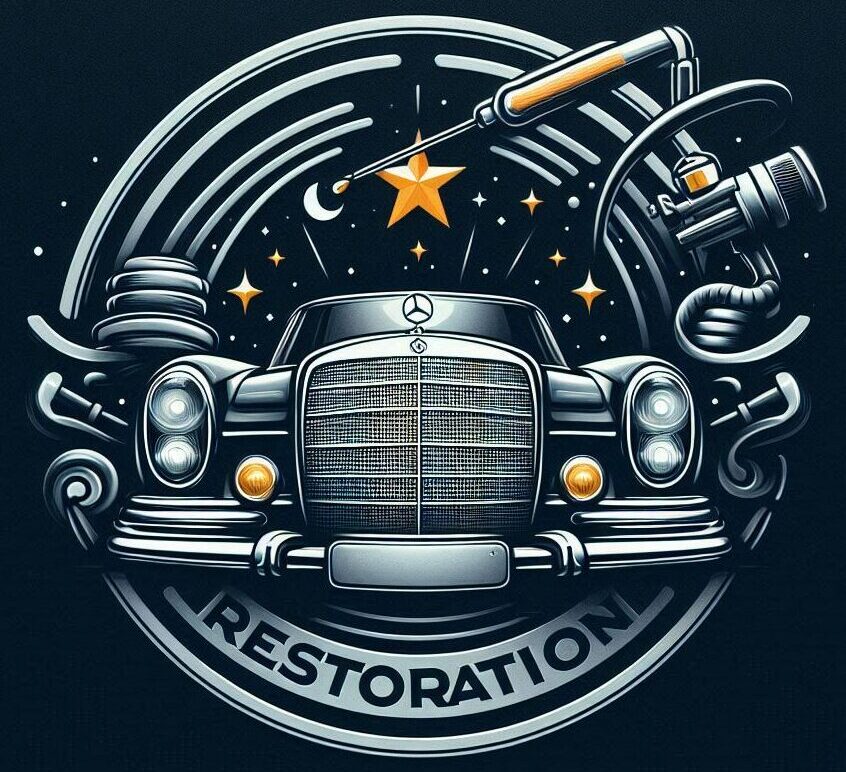
For classic Mercedes enthusiasts, understanding the engine components of Classic Mercedes is key to appreciating what makes these cars so special. Classic Mercedes engines are a blend of robust German engineering, precision design, and a bit of old-world charm. Whether you’re a new owner or restoring a classic model, getting to know the engine’s components will help you maintain it, troubleshoot issues, and enhance your connection with the car.
Classic Mercedes engines aren’t just about horsepower or torque. They’re crafted pieces of art reflecting meticulous German engineering. Identifying one can be quite the adventure if you know what to look for.
Visual identification is your first step. Check out the engine’s design—older models often come with distinctively heavier, iron-clad blocks, with every detail exuding classic charm. Mercedes engines like the M113 and M111 are peculiar in their looks and layout.
Listen up for those unique sounds. Classic Mercedes engines have a unique throaty growl, quite different from modern purrs. The exhaust note can often be a clue, much like knowing the roar of a lion compared to a house cat.
A closer look at the serial number seals the deal. Located usually on the engine block, these numbers are like the engine’s DNA, telling you when and where it was built. By decoding it, you can work out the exact model and year it belongs to.
In this guide, we’ll break down the main engine components in classic Mercedes models. We’ll cover what each part does, how to identify it, and offer a few tips on caring for each component.
Step 1: Get Familiar with the Engine Block
Why It Matters: The engine block is the foundation of the engine – it holds all other parts together and is essential for the car’s performance.
What It Is: The engine block is typically a large, sturdy block of metal with cylinders inside where the pistons move up and down. In classic Mercedes models, you’ll often find cast iron blocks, known for their durability.
How to Identify It: Open the hood and look for the large metal housing where most of the engine components are attached. It’s usually painted black or silver, depending on the model and year.
Resources:
- Basic Overview of Engine Blocks: Check out Ebay’s Guide to Engine Blocks for insights into the basics of engine blocks in classic cars.
Step 2: Understand the Role of Pistons and Cylinders
Why It Matters: Pistons and cylinders work together to create the combustion that powers the engine.
What They Are: Pistons are metal cylinders that move up and down within larger cylinders, creating a combustion cycle when fuel ignites. In classic Mercedes engines, the number of cylinders can vary depending on the model (e.g., four-cylinder, six-cylinder, or V8).
How to Identify Them: Pistons are inside the engine block, so you won’t see them directly. However, if you’re doing maintenance or restoration, you may encounter them when the engine is disassembled.
Resources:
- Detailed Guide: MotorTrend’s Guide to Pistons provides a clear overview of how pistons function in classic cars.
Step 3: Explore the Crankshaft and Camshaft
Why It Matters: These components control the timing and movement of the engine, coordinating how fuel and air enter and exit the cylinders.
What They Are:
- Crankshaft: Converts the up-and-down movement of the pistons into rotational motion to turn the wheels.
- Camshaft: Controls the opening and closing of the engine’s valves, letting fuel in and exhaust out at the right moments.
How to Identify Them: The crankshaft is located at the bottom of the engine block, while the camshaft is typically situated above the cylinders. Both can be seen more clearly if you’re performing a deeper inspection or working with a mechanic.
Resources:
- Camshaft and Crankshaft Basics: AutoZone’s Learning Center has beginner-friendly guides on these essential parts.
Step 4: Locate the Carburetor or Fuel Injector
Why It Matters: These components control the fuel-air mixture, crucial for optimal engine performance. Older Mercedes models often have carburetors, while newer classics may feature fuel injection systems.
What It Is:
- Carburetor: Mixes air and fuel to create a combustible vapor that the engine uses to run.
- Fuel Injector: A more precise system that injects fuel directly into the cylinders.
How to Identify It: The carburetor is often a rounded, metallic component on top of the engine block. Fuel injectors are smaller and connected to the intake manifold. Checking your car’s manual will specify which system your engine uses.
Resources:
- Carburetor vs. Fuel Injection: Hemmings has articles on the benefits and challenges of each system in classic cars.
Step 5: Get to Know the Distributor and Spark Plugs
Why It Matters: These parts are part of the ignition system and are essential for starting the engine and keeping it running smoothly.
What They Are:
- Distributor: Sends electricity to the spark plugs, ensuring they fire in the correct order.
- Spark Plugs: Ignite the fuel-air mixture inside the cylinders, powering the engine.
How to Identify Them: The distributor is a circular, often black or silver component connected by thick wires (plug wires) to each spark plug. The spark plugs themselves are smaller and are threaded into the cylinder head.
Resources:
- Ignition System Guide: Advance Auto Parts offers a breakdown of ignition components, including how spark plugs work.
Step 6: Locate the Radiator and Cooling System Components
Why It Matters: Classic engines run hot, and the cooling system prevents overheating, which can damage the engine.
What It Is: The radiator, along with hoses and coolant, keeps the engine cool. It transfers heat away from the engine and uses fans to circulate cool air.
How to Identify It: The radiator is a large, metallic component at the front of the engine bay with a grill-like appearance. Hoses connected to it circulate coolant to keep the engine temperature stable.
Resources:
- Cooling System Basics: AutoZone’s Cooling System Guide is a helpful resource for understanding and maintaining your cooling system.
Step 7: Understand the Function of the Oil Pan and Oil Pump
Why It Matters: Proper lubrication is crucial for keeping your engine parts moving smoothly and reducing wear over time.
What They Are:
- Oil Pan: Holds the engine oil and is located at the bottom of the engine.
- Oil Pump: Pumps oil through the engine to lubricate parts and prevent overheating.
How to Identify Them: The oil pan is at the base of the engine and can be seen from underneath the car. The oil pump is located inside the engine and requires disassembly to access.
Resources:
- Oil System Maintenance: Castrol’s Learning Center has articles on why regular oil checks and changes are essential, especially for older engines.
Step 8: Inspect the Timing Chain or Belt
Why It Matters: The timing chain or belt controls the synchronization of the crankshaft and camshaft, ensuring the engine’s pistons and valves move in harmony.
What It Is:
- Timing Chain/Belt: In most classic Mercedes models, a timing chain is used, which tends to be durable but can wear out over time.
How to Identify It: The timing chain or belt is housed within a cover on the engine’s front side. Accessing it typically requires some disassembly, so it’s often checked during major maintenance.
Resources:
- Timing Belt vs. Chain: Auto Evolution explains the pros and cons of timing belts and chains, especially for vintage vehicles.
Step 9: Familiarize Yourself with the Exhaust Manifold
Why It Matters: The exhaust manifold collects gases from the engine and directs them out through the exhaust system, preventing buildup and maintaining engine efficiency.
What It Is: The exhaust manifold is a pipe-like structure that connects to each cylinder and directs exhaust gases away from the engine.
How to Identify It: It’s typically located on the side of the engine block and connects to the exhaust pipes. It’s usually made of cast iron and can become hot, so be careful when inspecting.
Resources:
- Exhaust System Basics: Zurich Kotak offers insights into how exhaust systems work and tips for classic car maintenance.
Step 10: Know the Air Filter and Intake System
Why It Matters: Clean air is essential for combustion. The air filter removes dirt and debris, preventing them from entering the engine and ensuring it runs smoothly.
What It Is: The air filter sits within the intake system and purifies the air before it mixes with fuel.
How to Identify It: In most classic Mercedes models, the air filter housing is a round, flat structure on top of the engine. It’s usually easy to access and should be checked regularly.
Resources:
- Air Filter Maintenance: K&N Filters provides guides on air filters, including replacement tips and how they impact engine performance.
Wrapping Up Understanding The Engine Components Of Classic Mercedes
Understanding the components of your classic Mercedes engine can enhance your enjoyment and connection to the car. It also equips you to handle basic maintenance, communicate better with mechanics, and make informed decisions about upgrades and repairs. Take the time to familiarize yourself with each component, and remember that every part plays a role in keeping your Mercedes running smoothly.
As you dive deeper into the workings of your engine, this knowledge will only add to the satisfaction of owning and maintaining a classic piece of automotive history. Happy exploring!
Exploring Variants: Types of Classic Mercedes Engines
Classic Mercedes engines come in all shapes and sizes, each with their own story and charm. In this section, let’s explore some of the standout types that have powered these iconic vehicles over the years.
The Inline-Four engines, often dubbed the workhorses, were small but mighty. Popular in models like the W123, these engines offered reliability and efficiency, making them a favorite for everyday driving. Known for their straightforward design, they were easy to work on, a bonus for any home mechanic.
When more power was needed, Mercedes turned to their Inline-Six engines. These were the smooth operators, offering a balance of performance and refinement. You’ll find these beauties in models such as the W126, with distinct engineering that set them apart from competitors. The longer block and extra cylinders make these engines smoother and quieter – a signature of Mercedes luxury.
Then we’ve got the V8s, the muscle in the lineup. Models like the W116 housed these beasts under the hood, combining exceptional power with the sophistication that Mercedes is known for. V8 engines are for those who want to feel the power and hear that distinct growl with every press on the accelerator.
Lastly, the occasional Straight-Eight makes an appearance, a rare gem among classic Mercedes. These engines were built for luxury, found in much older models like the Mercedes-Benz 770. Their elegant construction and significant size gave vintage cars their exquisite poise and are a collector’s dream.
Choosing the right engine for your classic Mercedes can depend on what you value most – whether it’s the straightforward maintenance of the Inline-Four or the powerful purr of a V8. Understanding what each variant offers helps you appreciate the craftsmanship behind these legendary machines.
Whether you’re peeking under the hood at a car show or contemplating a purchase, recognizing these unique engines can guide you in making informed decisions. Each one has its quirks and highlights, ensuring there’s always more to learn and admire.
